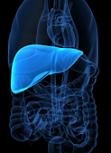Advertisment
WTC Report 2014: How far can we push the limit of donor age in DCD liver transplantation?

By Irene Scalera et al, Queen Elizabeth Hospital, Birmingham, UK. Using livers from deceased donors over the age of 60 years could provide a means of expanding the donor pool for liver transplantation, provided the donors and recipients are carefully selected and matched. A study carried out at Queen Elizabeth Hospital in Birmingham shows that the short- and mid-term outcomes after liver transplantation from older deceased donors are acceptable and comparable to those with younger donors. The results of the study were presented by Dr Irene Scalera as a late-breaking abstract at the ILTS 2014 congress.
Donor age is widely accepted as a significant prognostic marker of outcome after transplantation of livers donated after circulatory death (DCD). Studies employing a continuous scoring system for analysing donor risk that has been developed within the Organ Procurement and Transplantation Network (OPTN) in the United States, the Donor Risk Index (DRI), show that a DCD donor age of over 60 years is a strong predictor of graft failure. However, increasing demand for transplantations and worsening organ shortages means the use of older donors is spreading throughout the transplantation field. Data from the European Liver Transplant Registry recorded over the last 10 years indicates an increase in the rate of liver donors aged over 60, although the use of older DCD donors remains limited. The aim of the study by Dr Scalera and colleagues was to analyse the outcome of liver transplantation carried out at the Queen Elizabeth Hospital centre using grafts from DCD donors older than 60 years.
The analysis comprised all consecutive DCD donor liver transplantations performed between June 2004 and June 2013, together with transplantations of livers donated after brain death (DBD) during the same period, for comparison. The donor and recipient characteristics were collected from a prospectively held database. Outcomes analysed included patient and graft survival, as well as vascular and biliary complications.
During the nine-year study period a total of 189 Maastricht category III DCD liver transplantations were performed at the centre. Of these, 54 livers came from DCD donors older than 60 years; these were compared with 135 livers from DCD donors aged less than 60 years of age and 125 livers from DBD donors aged over 60. No statistically significant difference was seen in patient survival at one and three years post-transplant: patient survival in the DCD aged >60 years group was 85% at one year and 82% at three years post-transplant, compared with 88% and 82%, respectively, in the DCD aged <60 years group, and 91% and 85%, respectively, in the DBD group. Similar results were obtained for graft survival at one and three years post-transplant (81% and 80%, 86% and 81%, and 88% and 83%, respectively). All three groups also showed similar rates of vascular/biliary complications
(15/22%, 11/24%, and 12/16%, respectively). Dr Scalera and the team noted that DCD donors aged over 60 years had been subjected to a strict selection process in terms of donor BMI, recipient MELD score, and criteria for acceptable cold ischaemia time, and concluded that conclude that provided these strict criteria were applied, DCD donors aged over 60 years could be successfully used for liver transplantation with acceptable short and mid-term outcomes.





